

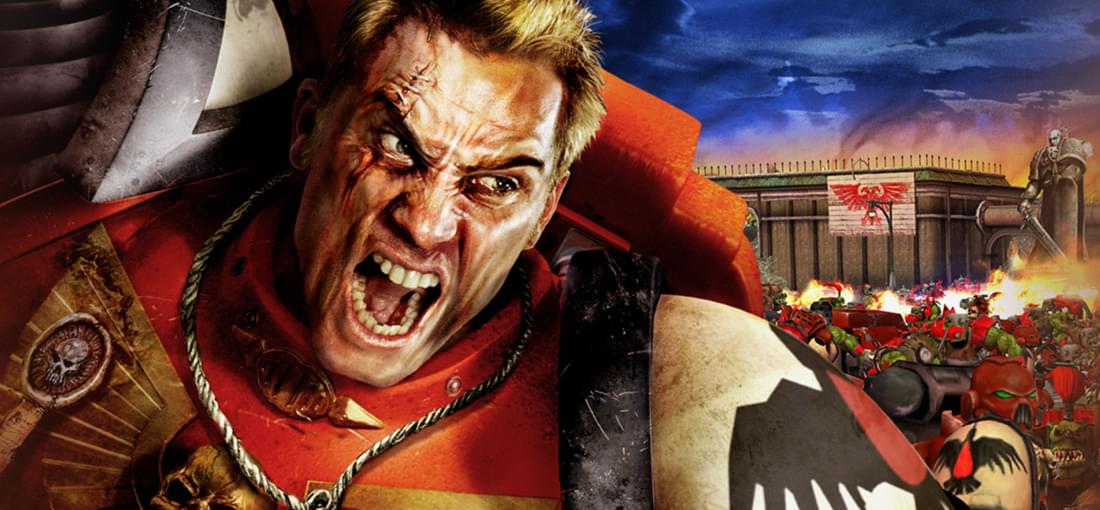
..there is only war! If you enjoy the RTS genre, then this collection is a must-have, whether you're mostly interested in the single player or multiplayer experience. Warhammer 40,000: Dawn of War is very good on its own, but it becomes excellent with Winter Assault and great with Dark Crusade. Soulstorm is the best for multiplayer, while the campaign remains fun despite the diminished quality of the narrative (different developer). The original devs at Relic perfectly captured the spirit of the Warhammer 40K franchise, making this a no-brainer for fans of the setting as well. Still looks and sounds great! Back in the day this take on the RTS formula was semi-innovative: base building is still integral but there's an emphasis on the tactical dimension - while power is gathered by building generators, the requisition resource rate needs to be increased by capturing and controlling certain "strategic points" on the battlefield using infantry squads and essentially battles are won or lost based on the players' ability to manage map control. Combined with the violent aesthetics, this design leads to some pretty intense savagery and constant conflict. Reinforcing and arming squads remains the same through many of the unit types, but the way you use them is completely different. Initially there were 4 factions: the Blood Ravens' Space Marines (versatile and stars of the original campaign), the Orks (Zerg swarm mentality), the Eldar (fast and fragile and complicated to play) and the Chaos Alpha Legion (dark side of the Space Marines). Then came the Imperial Guard (specialized in defense), followed by the game-changing Necrons (power is the only resource needed to make Necron units which can often resurrect, gotta love the Monolith), the Tau Empire (only one with a 'permanent choice' for the last part of the tech tree), and finally the Dark Eldar and the Sisters of Battle (both rely on a third resource to unleash their special abilities). Generous content fully recommended!
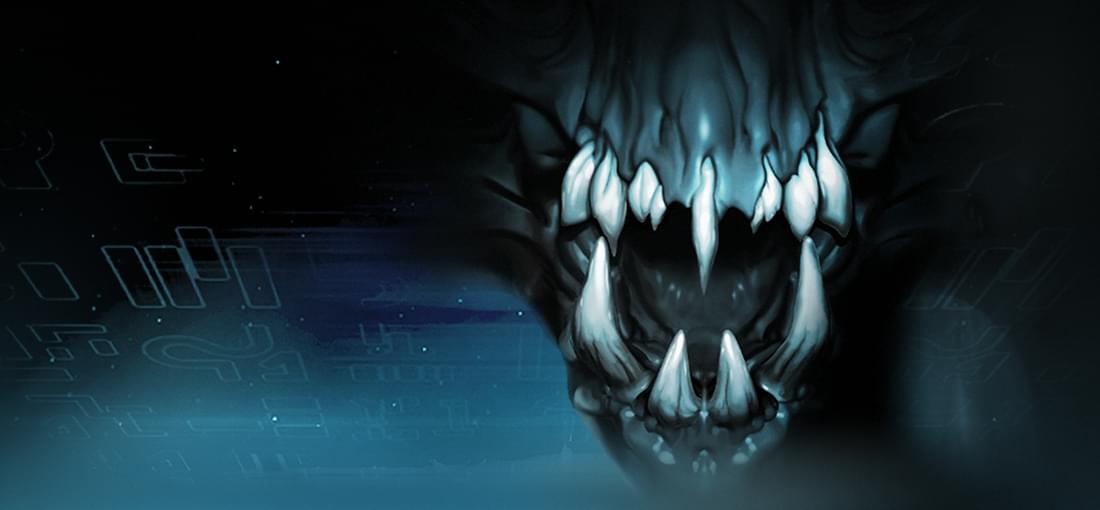
The Alien Breed Trilogy reboot (remarkably made by the same company who created the original series on the Amiga) is overall a worthy sci-fi shoot'em up experience with a coating of survival-horror. On the normal ('Veteran') difficulty setting the arcade action isn't mindless and you will occasionally face a challenge but you'll have to play on the 'Elite' setting if you want the general experience to feel like a proper top-down tactical shooter. Over the course of three games - which feel more like episodes - the experience can get a bit too repetitive (gameplay + environments) which is why I'd recommend this mostly to fans of the genre. Presentation-wise: graphics are great, soundscape is very good, and there's a decent story (inspired by classics of the genre). The 'Aliens'-like atmosphere is well done but don't expect fear like in Dead Space: it's more about things getting stressful as you need to quickly shift your position while managing your ammo and cycling through the right weapons in various situations (which can be timed). The ability to not only scavenge for gear but also spend credits at Intex terminals for health kits, ammo and weapons upgrades is a nice feature which encourages exploration and smart thinking. The titular breed of aliens will mostly try to swarm you, but there is the odd boss fight and special gameplay sequence here and there. I'd say the trilogy in general is between good and very good (75%): repetition is the biggest problem, but you still feel compelled to make it all the way to the end - and happily enough, Alien Breed 3: Descent specifically is actually very good (80%) and the best episode of the three. If another desperate fight for survival aboard spaceships where things keep going from bad to worse with plenty of 'system malfunctions' sounds like your idea of a good time, then by all means - take the plunge! P.S. display bug with Nvidia cards affecting map + logs in PDA: set AA mode to "application-controlled" in Control Panel
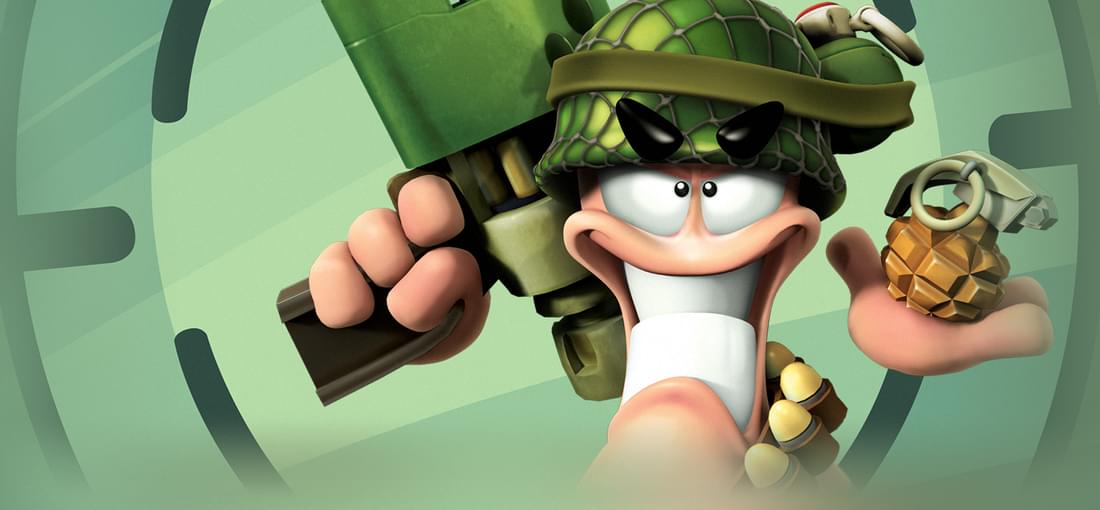
I have the game on Steam (feat. online multiplayer), will likely buy it here for long-term (local multiplayer only which is OK - hotseat FTW). Worms Ultimate Mayhem is the best result we got from Team17 applying the classic Worms formula to a 3D game environment. It basically has everything you remember from the series: customisable worms and teams (with funny voices, wacky tombstones and ridiculous hats), an array of tools and ludicrous weapons to deploy in turn-based fights, randomly generated maps, fully destructible environments - all with great graphics and good soundscape (some catchy music, even includes a call-back to the traditional Worms theme). For sure it isn't as accessible as the 2D Worms games as the 3rd dimension does add to the complexity of moving around and pulling off an accurate shot - that said, the controls are solid, and if you've played 3rd person / 1st person 3D action games before then you'll get familiar with how to manoeuver your worms around the landscape pretty quickly. My brother is one of those people and in just the first session playing together for an hour he got the hang of it and had lots of fun (he even beat me in a match which exemplified the spirit of the series with its share of carefully laid out plans blowing up in your face and Worms falling into water and swimming like bricks). It provided the best solo experience I've had with a Worms game: I've played Worms 2, Armageddon, World Party and Reloaded - and Ultimate Mayhem has the best campaign (the Worms 4 one) and the best missions. Even the timed challenges are fun. In future, if Team17 returns to 3D Worms, I'd like to see these cool mission setups with a darker, war satirical theme à la Armageddon. This is what Worms fans were hoping to get out of Worms 3D (whose campaign is included here and benefits from better controls and GFX) - and hence I highly recommend Worms Ultimate Mayhem. There's dozens of hours of fun to be had, so step up boldly and make Boggy B proud!
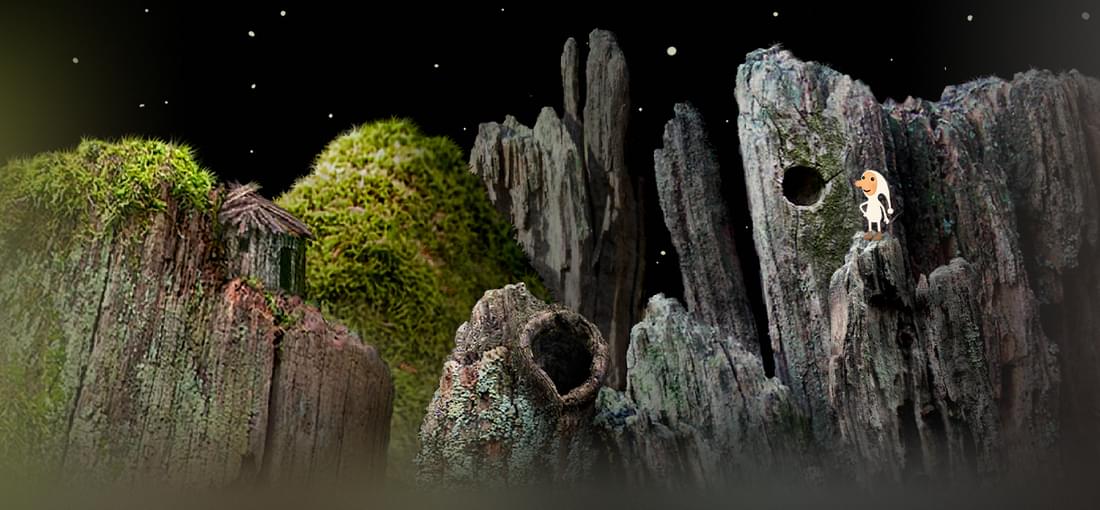
It's a good game: very short (my first playthrough of the original Flash version was under an hour and I was soaking it all in), but memorable all the same thanks to very good graphics with a (at the time) unique art direction, and some good use of sounds. The gameplay itself is quaint, nothing too taxing obviously but there's just enough that you need to think. It's really just that: short and sweet. A proof of concept for greater things to come. And a good intro to the works of Amanita Design.
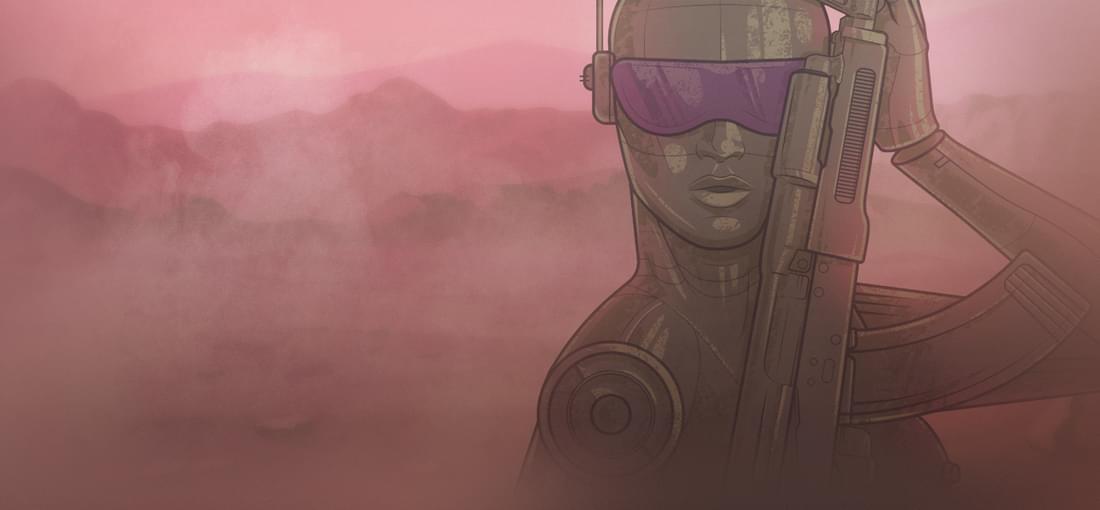
I got this for free when it first arrived here, and I am glad about that seeing as this is literally the worst game in my GOG collection. But that doesn't mean it's completely devoid of interest: A.D. 2044 is actually an adaptation of the 1984 Polish cult classic "Sexmission", which is a comedy science fiction film with a hidden political satire layer specific to the time and place of its production. This game made me discover that film, and it's the best thing that can be said about the former since the latter is honestly fun (the satire is not only directed at intergender conflict: rather more importantly for the film's creators, the satire is upon totalitarianism). While the game retains the satirical element in the broadest sense, it doesn't really manage to tell a story beyond the intro (which still has one of the most incredible lines I've ever heard, spoken matter-of-factly: "[humans] their inventions were: space shuttles, nuclear power and the war of the sexes"). The adventure seems to have been strung together randomly, and the character you play as regularly expresses himself in a way that suggests he barely comprehends his situation (in layman's terms: the voice acting is bad) - when he isn't breaking the fourth wall by providing clues to make up for the very subpar game design. Because ultimately, what makes A.D. 2044 a mostly negative experience is the illogical gameplay reliant on pixel hunting and arbitrary obstacles (which include the inventory puzzles). Some puzzles make sense but cannot compensate for all the nonsense, and I had to resort to a walkthrough a lot (FYI, I completed realMyst without any walkthrough so it's not like I suck at puzzles in general). What's left is some above average graphics with decent art direction (except for the awful human character models), and a few direct references to the film which will be lost on most people. I'll remember one fairly good music track also (and a TERRIBLE one too). Glad I watched the film, tho!
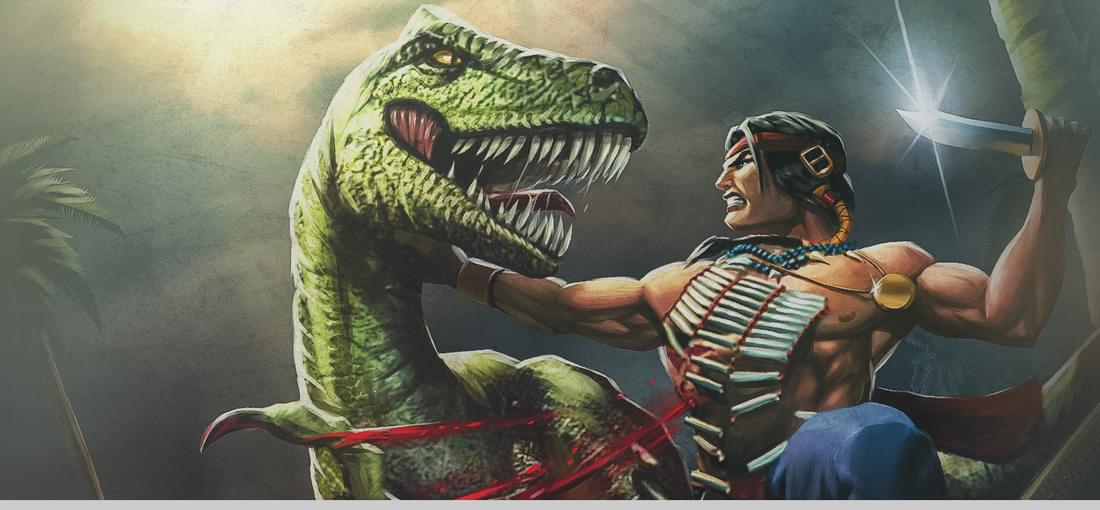
The remaster of Turok is definitely better than the original '97 release on the Nintendo 64, even if you opt to play this update without the fancy graphical enhancements in order to be as close as possible to the "vanilla" (original) visuals (which may help with visual consistency). The main reason for the improvement lies in the controls: mouse + keyboard will always be better for freeform FPS games than the N64 controller (which only really stands the test of time when playing 3D platformers). The remaster also has the benefit of a much higher frame rate and greater FOV, and along with the excellent implementation of first person movement and associated gun play, it makes for an enjoyably smooth FPS experience. Turok was always designed to provide fast-paced FPS action, which shines here better than ever before thanks to the aforementioned improvements, but the game stumbles in its insistence on throwing regular platforming challenges at the player: these can be too difficult from a design perspective, meaning they'll give you a harder time than even the game's toughest boss fight (on the normal difficulty setting at least). Again, the remaster does help to smoothen things out a little, but the jumping sequences remain problematical. The other emphasis is on exploration which is usually more enjoyable, though it can slow things down a lot. The AI is just about able to do its job, but the animations are surprisingly smooth and sophisticated (and were nothing short of amazing back in '97): e.g., there's the realistic looking running animation with pivoting, and the death animations with blood splatting are "wicked". The setting is wacky and while the narrative is really just mediocre, the game has good atmosphere (I recommend playing with the remaster's extended view distance turned off so as to be plunged into the fog of the original). You feel compelled to make it all the way to the end. It's fairly shallow stuff - a good game, nothing more nothing less.
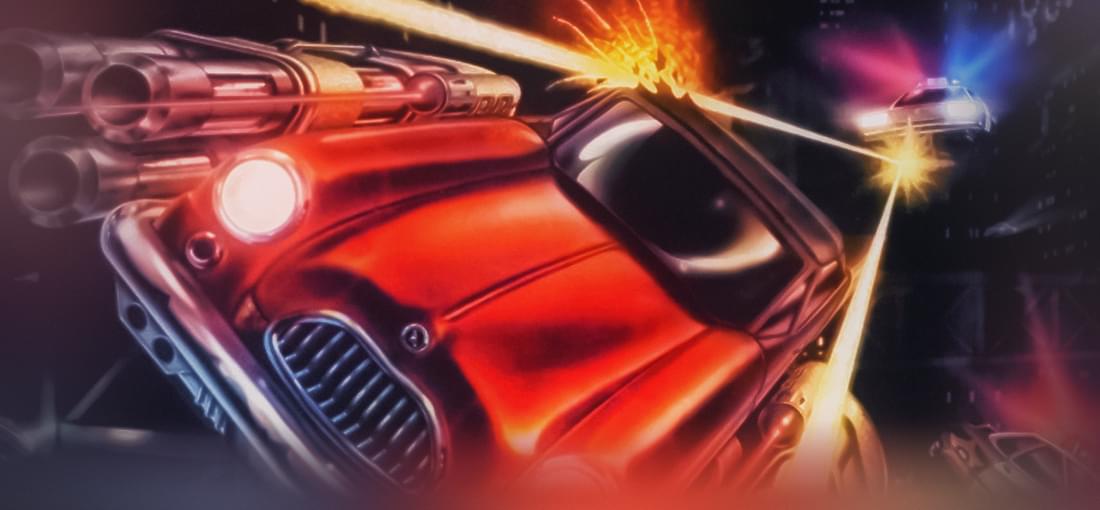
Reading the description of the game on GOG, I have to laugh: not only does it vastly exaggerate when it says that this is a "revolutionary mix of shooter and future vehicle simulator" but it also wrongly states that there are 4 distinct cities (there are only 3 as can already be guessed from the game's intro - and no the tutorial level doesn't count being just a short virtual simulator). Crime Cities was released in 2000, long after G-Police (1997) and even after the latter's sequel G-Police: Weapons of Justice (1999); BHunter, released in 1999, is even more similar as it brought to life almost exactly the same concept as Crime Cities (the differences are in the story motivations and the order of missions - which is entirely linear in the case of BHunter). With all that said, the good news is Crime Cities is a good game. This is a short version of my review, which can be found in its complete form on this game's specific forum: https://www.gog.com/forum/crime_cities/review_355_stars_good_but_play_on_very_easy_difficulty_setting Like the other aforementioned games, it uses the cyberpunk aesthetic to build a dystopian future heavily inspired by Blade Runner (and the thrill of the film's flight sequences through near-future Los Angeles). The game casts you in the role of an undercover agent who must infiltrate the ecosystem of Pandemia: the intro cinematic does a very good job at setting up the story, but the storytelling in-game never quite manages to be as compelling. Repetition is the biggest problem: visiting 3 planets should provide decent variety, but the overall feel is similar; the soundtrack is good but is the same throughout the whole game; the mechanics limit your approach to any given problem, and the same difficult brand of guerrilla dogfighting is repeated over and over again (balance is an issue which is why this is the first game I completed on a difficulty setting lower than medium). No VTOL - this is not a true 6DoF title. Mouse+keyboard is best.
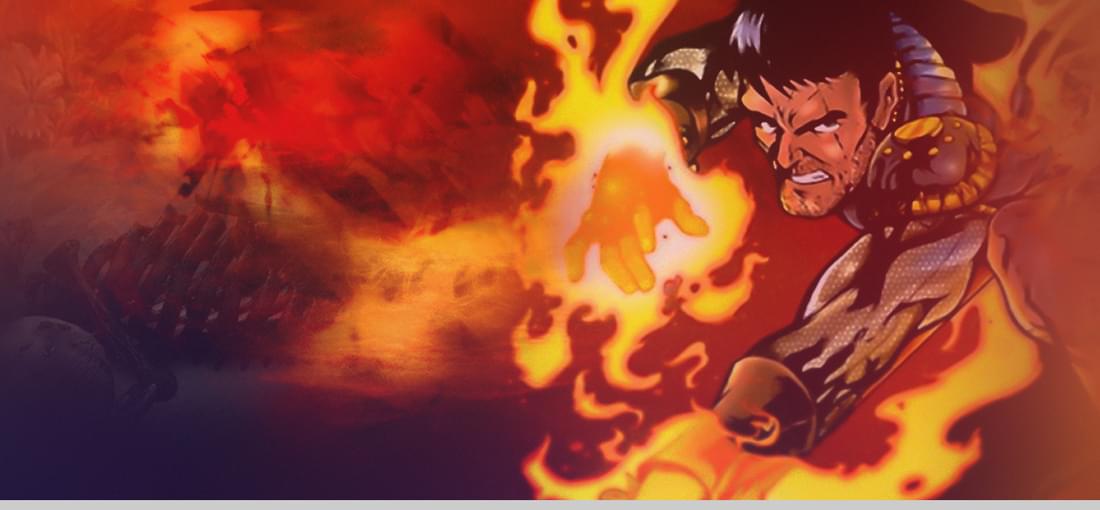
Let's get this out of the way first: Crusaders of Might and Magic is not a role-playing game. The PC version of this title was the first to be released in autumn 1999, and while it pretends to be an action-RPG (via a levelling up system), it's actually a 3D action-adventure game (there's no choice regarding character development) with an emphasis on the beat 'em up side of things. That beat 'em up aspect is what drives and saves the game so if this focus does not interest you or you don't like the 3D action-adventure genre in general then don't bother with this title. What we got here is not an actually good game, it only manages to be above average (60%) - provided that you play it on the highest difficulty setting (fittingly named the "Crusader" difficulty level). On this setting, the combat gets legitimately challenging and interesting while still remaining fair, and by the time you reach the last third of the game (by which time you should have levelled up a fair bit) you get to play with some truly fun spells and some big fights will provide very good moments of gameplay. And to be clear, here's a bit of myth busting: a couple of other reviews here claim that you could just run all the way from start to finish without interacting with anything (avoiding enemies) and still beat the game; that is incorrect, for in order to get past some obstacles you need to acquire certain quest-related objects, and in at least one case that means fighting and I don't see how one could manage if one avoids all combat up until that point - not to mention the extremely hazardous platforming (most annoying point in the game) within the Catacombs which comes with enemies shooting fire balls at you from a distance and knocking you off a precarious ledge in one hit just as you're preparing to jump... and I haven't even mentioned the boss fight at the end of the journey. At least on the highest difficulty setting, claims of being able to walk from start to finish while avoiding all fights and still being able to finish the game are simply untrue. But there's no escaping the fact that while the game is technically complete (with a start, a middle and an end), it does feature unfinished areas that hurt the overall experience. It's a shame that the game's engine is quite capable but that the actual game hardly ever takes advantage of it (I mean things like dynamic lighting, etc.). At its best, the game actually looks somewhere between good and very good (and closer to very good, like within parts of the Corantha Mines which feature fairly complex, curved geometry and plenty of coloured lighting; the player character's dynamic shadow is also very well done), but it also lacks any true attempt at making animated textures for liquids, for example, and displays a few too many lava textures which are completely dark/unlit (!) while the only torches with flickering light are found in the starting dungeon... at its worst, this lack of polish leads to one particularly absurd moment, where a stronghold which, according to lore, should be "in a hidden valley between two impassible mountain ranges", is actually (in-game) in the middle of the sea!!! The rushed nature of the plot is another shame: most cinematics do the bare minimum to link things together (luckily the game's CGI intro is actually very good: it looks very good and it knows exactly what it wants to be, making us complicit with its relishing of adolescent fantasy), a lot of NPCs have bad voice-acting and lines that feel like placeholders (and the lore almost never references the wider Might and Magic series), and at the end of the day what constitutes a good basis for a good story of swash buckling fantasy was left undeveloped with the end result being something mediocre. But not below average, either: the story still manages to have a couple of surprises up its sleeve, and a couple of concepts are really cool. The main protagonist, Drake, is likeable and well voiced, and the Dwarves have at least some believable personality, even if it is very conventional. The music is good too in general, even if it can get repetitive, and one or two tracks are even excellent. Sound effects are adequate. It's clear that there's a lot of repetition going on here, from the fighting scenarios to the level design, which means that you will occasionally feel a bit bored. On the highest difficulty setting, the challenge will keep you from falling asleep during the more repetitive segments. If I am being honest, I would only recommend the game if you: - are particularly interested in video game history and enjoy the 3D action-adventure genre in general - consider the 3D action-adventure genre to be one of your favourites - are interested in working on level design and game design in general: in order to learn, it's always good to look at not only what worked, but also what didn't work - a combination of the above. The game could have been a properly good title (and even very good), but 3DO rushed the development of this game and it shows (3DO was making some bad decisions which would eventually lead to its demise). The Playstation version which came out in early 2000 was properly finished, but the downsides compared to the PC version is that it looks less good and the combat is also less well implemented.
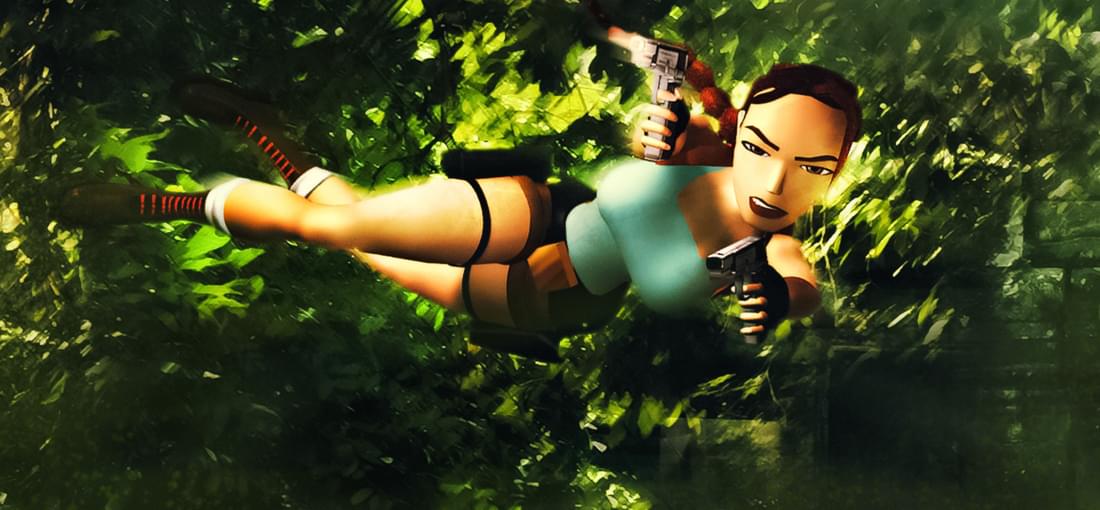
TL;DR : The original Tomb Raider trilogy is a must-play for fans of the 3D action-adventure genre (which was invented here), and still worth a go for those interested in video game history. You will embark on some pretty epic adventures which will test your mettle. In particular, prepare to be challenged by torturous level design, humbled by perplexing puzzles, and frustrated by unreal platforming sequences. Oh, and you will have plenty of shocking deaths along the way! At times, you will also have to get those Uzis out and start firing away non-stop while back-flipping over a treacherous enemy or two... or three or four or five! Tomb Raider is still good after all these years, but the twenty-year-old Tomb Raider II is a bit better by improving upon its predecessor in more ways than one and by being only slightly worse in one department: story. Tomb Raider III might seem the least original at the end of the day, but objectively (and logically) it is the most accomplished title of the trilogy (with a story on a par with that of the first game) and remains a very good game to this day. Don't play the games back-to-back: they are very similar and not focused on storytelling, so they are best enjoyed one at a time, with breaks between them. Overall, this package is a very good deal, so 4/5 stars! Technical remarks: - 1) the first game was originally released on the Playstation, and as a result the PC version is a port - made by people who had no idea of the importance of such a game: the music, by default, is missing BUT you can add it back in - just search the Web for downloads and tutorials on how to do this, it's indispensable! 2) in my experience, there weren't any problems with Tomb Raider II BUT with Tomb Raider III there is an annoying visual glitch in the main menu: again, search the Web for a solution. 3) expansions for all three games: Tomb Raider: Unfinished Business, Tomb Raider II: Golden Mask, and Tomb Raider III: The Lost Artefact (initially a stand-alone product); get these by whatever means necessary (they are not available officially anymore), if you want the full experience (especially The Lost Artefact, which is actually a mini-sequel). Given the amount of time I spent playing these games, I am willing to make a review for each title separately: - Tomb Raider (1996): The one that started it all... The game that introduced the 3D action-adventure genre! Does it hold up? Surprisingly perhaps, it does - there is enough complexity on top of the primitiveness that the game still manages to be good nowadays. It was a technical marvel back then but today it has aged and so will only look "quite" good (somewhere between average and good), with low-res, low-poly graphics combining with fairly complex level geometry and impressive vistas. Lara Croft looks unmistakably female, but that's it. Fun fact: the game uses a technical limitation of the time, namely a low draw distance, to its advantage - for example by making some environments look more mysterious as a result, and surprising players by keeping some things "hidden" until the last moment ("fog effect")! The gameplay is rather technical and - importantly - movement is tile-based, although you wouldn't notice at first. This takes some getting used to but a nice tutorial is there to ease new-comers in, and clever level design means you will explore the full set of possibilities (beyond the nominal existence of standard moves, such as walking, running, jumping...) over the course of the adventure. The game definitely took some cues from the cinema, and the adventure is rhythmed by special events that will suddenly trigger a piece of music for dramatic effect. The hardest part of the game is the puzzle-solving: there are some "one-off" mechanics that can be pretty obscure, but occasionally the level progression itself will seem obscure due to the low graphical fidelity. Exploration is central to the experience. The fighting sequences are occasionally tough but mostly they will serve to recapture your attention after you spent time on a potentially mind-numbing puzzle. One thing the game does particularly well is conjuring a strong atmosphere to immerse you in the journey before throwing something at your face that will make you jump in fright on occasion! Even today, Tomb Raider can be a bit scary - and that is in no small part due to the soundscape, with usually excellent use of sound (and music). Of course, the fact that you're spending most of your time raiding tombs participates in building up a somewhat claustrophobic experience. The story is fine - there's just enough to maintain interest, and the CGI cinematics were very impressive at the time (they still look "quite" good today, with Lara at least looking like a stylised hot and badass chick - with a braid and not a lame bun!). The myth of Atlantis works well and there is at least a little bit of character development for the main protagonists. If there is anything original here (at least for the time of the game's release), it's probably the fact that the main protagonists are female. Also, the angle of the story is ultimately more sci-fi than fantasy. Tomb Raider: Unfinished Business (1998): No story here - or so little! Basically, you get 4 new levels - first 2 are part of the Shadow of the Cat episode, which notably adds new textures to the base game incl. an actual (twinkling!) sky, while the other 2 are supposedly an extended ending for the base game that makes no sense given their length. All levels are great by the first game's standards and are particularly challenging. Not indispensable, however, unless you want more of the same type of experience. P.S.: Core Design published this add-on really late due to the workload on main Tomb Raider titles. Tomb Raider II (1997): This one was such a huge success... over 8 million copies sold as of 2003, the best-selling entry in the franchise before the reboots (and in proportional terms - taking into account the existing market at time of release - this title was definitely the most successful in the series)... and it's special to me, as it is the first Tomb Raider game I played (I remember my initial impressions back in the 90s: that this was realistic looking and scary as hell!). Graphically, it is a significant improvement over the previous game: Tomb Raider II actually still looks good, with Lara Croft that for the first time looks like a credible (if stylised) human being in-game - with curvy breasts instead of pointy polygons and a dynamic braid that was a real animation triumph back then and still looks fine - and proper skybox technology as well as dynamic lighting (which allows for new gameplay tricks). The resolution (at least on PC) is significantly higher too. As for the gameplay, it sees some improvements as well: you can now climb ladders, perform mid-air rolls, and roll underwater (a very welcome ability, also in light of the game's extensive underwater sequences). You get new weapons - the grenade launcher is my favourite, and for the first time you can fight underwater too thanks to the harpoon gun - and the advent of dynamic lighting leads to the appearance of completely dark passages which require flares to navigate. Also, the game introduces vehicles (not just in cinematics!) which Lara must use in order to pass certain specific segments: the motorboat and snowmobile. In line with this, some environments are more open than previously and are more varied than in the first game: besides the traditional raiding of tombs and massive underground catacombs, actual outdoors can provide wondrous views and brighter vistas than before, there are urban and tech environments and a significant part of the game takes place underwater, while the still limited draw distance again participates in thickening the atmosphere of the levels. I should point out that the tutorial level exemplifies these improvements and Croft Manor now feels like an actual place. The game's first mission is truly iconic as well: from the level's beautiful composition mixing natural and man-made environments to its amazing sequence of deadly traps which provides a great rhythm to the start of the adventure, the Great Wall is better than any of the levels from Tomb Raider, has one of the best secrets ever in the franchise and generally is one of the best first levels of any game of that era. And suitably, Tomb Raider II benefits from a climax that provided what was at the time the best level of the franchise (a pure Tomb Raider experience), and instead of stopping there the game actually prolongs the finale in a surprising way and even ends with a double ending. One thing to note is that there is much more action to be had here - with gunfights galore - than in the previous entry, so while the puzzles are on the same level as before, the heavier emphasis on fighting makes this title a harder experience. And the gameplay remains fairly rigid (being tile-based). On a side note, for the first time you don't have to kill everything that moves, and you may benefit from allies (first sign of actual dabbling with artificial intelligence in the series). The soundscape is further enriched in this entry with new sounds and music pieces (incl. the ever awesome and eloquently named "Beauty Unfurled", which perfectly suits a moment of discovery and contemplation). Again, the game manages to be a bit scary at times. The story is OK and is mainly held together by the cinematics (incl. the great intro), which are technically better than previously and still look good today. While the use of Chinese mythology combined with Italian mafia tropes is exciting, the overall plot is slightly inferior to that of the first game, due to the virtual absence of character development (Lara is Lara as previously established, and the main antagonist is cool but one dimensional). Of course, in a game like this the story is as much in the player's journey as it is in the script, and conceptually there's plenty of mystery here to stimulate one's imagination. Unlike in the first game, the story here is more fantasy than sci-fi. Overall, Tomb Raider II stands the test of time well and is somewhere between good and very good. Tomb Raider II: Golden Mask (1999): A better expansion to the base game than Unfinished Business was to Tomb Raider, Golden Mask actually has a bit of a plot (even though it gets thrown out of the window after you accomplish the main objective), its own main menu and plenty of new textures, new skies, new skins for enemies and potential allies alike, and besides the 4 core levels of the adventure, there is a secret 5th level that can be unlocked by finding all the secrets in the expansion's main campaign - and boy is it worth it! Very tough, but excellent all around by the base game's standards. Tomb Raider III (1998): A massive game, and the hardest of the trilogy. It takes a good hard look at what the two previous entries did, and pushes the format further: - 1) Gameplay improvements: - you can now duck, crawl, sprint and traverse hand-over-hand monkey-bar style, bringing the overall gameplay to a rather advanced stage of complexity; - new vehicles and more types than before; - new weapons (the rocket launcher is my favourite); - some non-linear levels (which can be huge); - better action sequences. 2) Graphical improvements: - coloured lighting; - particle effects instead of sprites (smoke, fire, explosions, etc.); - weather effects (rain, snow falls...); - triangular polygons leading to more complex level geometry (and allowing for rippling water features); all in all, at its best the game still looks somewhere between good and very good (and closer to very good, it notably impresses with a few actually convincing jungle scenes). 3) New adventure format allows players to choose where to go first on the world map: this acknowledges the very "episodic" style of Lara Croft's adventures and gives players extra agency. The first part and last part of the campaign remain fixed. Cinematics again drive the story (the CGI ones still look good, with animations slightly improved over those from Tomb Raider II). The overall story might not be as focused as the one in Tomb Raider, but it is richer in subplots and more varied, again participating in this sense of embarking on an epic journey. Unlike in Tomb Raider II, the story here is more sci-fi than fantasy (just like in the first game). The game is not even just imitating Indiana Jones now, but also James Bond and... among other things, it takes inspiration from a famous horror movie at one point. It will be scary! 4) New music and sounds (on top of inheriting what came before): despite having more variety, the game in this respect isn't better than Tomb Raider II (but not worse either), due to the occasional random use of its playlist (which can be immersion breaking) which doesn't show as much care as before in this department. At the end of the day, Tomb Raider III manages to raise the bar even higher, with its best levels definitely surpassing the best that came before them, and is still a very good game today. Tomb Raider III: The Lost Artefact (2000): This is the one expansion in the trilogy that I'd argue is indispensable for completing the base game's experience. The Lost Artefact is actually a mini-sequel composed of 6 new levels, and while it is only slightly more story driven than Golden Mask, it manages to be far more coherent. As usual, all the levels are great by Tomb Raider III standards, but its best level is the first one and it actually is on a par with the best level from the base game! Taking place in Scotland, the level features great design and architecture, plenty of new textures, new skins, a beautiful new sky and even a new 3D model for what is the best secret in the Tomb Raider series along with the one in the Great Wall. Really fantastic stuff. The ending is great if absurd. Thanks for reading! :)
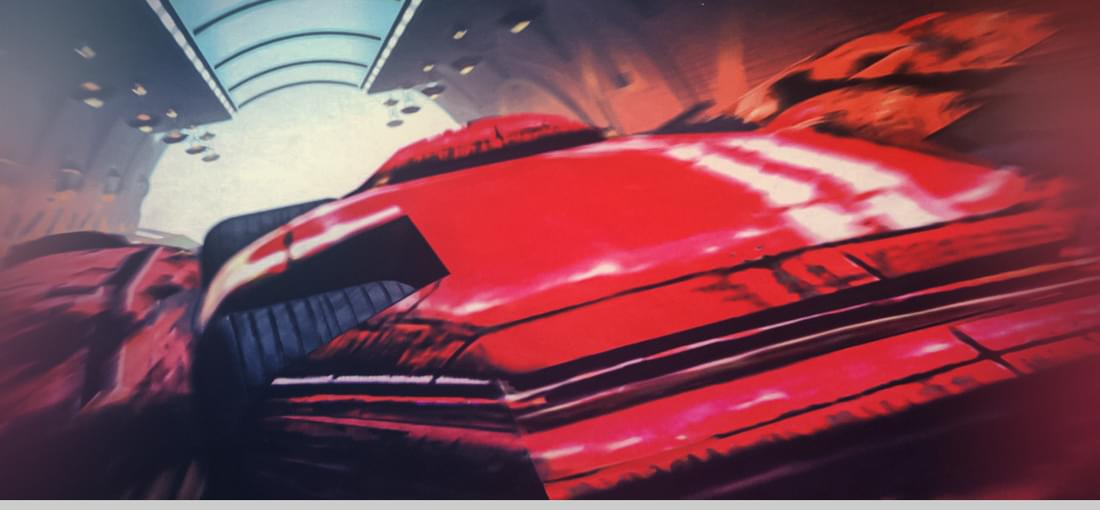
POD: Planet Of Death is a very intriguing title which has gone down as a classic and deserves your attention if you have a soft spot for sci-fi post-apocalyptic settings and are not allergic to racing games. The game always struck me the way a spunky chick might do: appealing in an almost irresistible way, even while I frankly didn't know much about it besides the synopsis and a bunch of screenshots. Damn, did it seem cool when I was a kid checking out the page dedicated to it inside a Ubisoft brochure which came with that Rayman game box! Yet it was only much later - when the title became available on GOG - that I was finally able to get my hands on it and boy did it feel good! POD's character shines through its combination of outlandish visuals, level design, furious vehicles and progressive electronic music. The game is 20 years old but it still looks good and sounds good and yes, it still plays well! The gameplay is mechanically simple, but the AI is suitably aggressive and - at least on the Normal difficulty setting, and moreso above - you WILL initially struggle to finish any track in a good position, and I found that despite having numerous vehicles with various characteristics on offer, I had to modify a chosen vehicle's attributes (logically within limitations) to my liking in order to have any reasonable chance of beating the AI in the campaign mode. You will also need to familiarise yourself with the tracks - and in some extreme cases foreknowledge is really indispensable, as a racing circuit may be completely maze-like (taking place inside a metropolis for example). Some tracks are absolutely fantastic - from the level design to the skybox, those are the ones you will be coming back to again and again. The game also features a well-implemented vehicle damage system, which will not only change your vehicle's appearance but will also make your vehicle heavier and slower as you take hits and crash into walls etc. (and thankfully, you can find various spots around the circuit which will allow you to undergo some repairs - at the cost of spending precious seconds outside of the race!). Honestly, from the vehicles and environments to the soundscape and cinematics, it is this game's artistic touch and compelling atmosphere that makes it special and hence still worth a try these days. At its best, it will look somewhere between good and very good, its vibes can be hypnotising and when (if?) you finally make it off the planet, you will be left with a shiver down your spine followed by a warm, fuzzy feeling. I also recommend to check out the legacy webpages for this title, such as the Jupiter State Museum... which illustrate how the game's setting has fired the imagination of those lucky enough to know it. The others? Well...